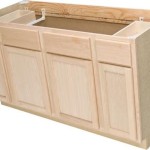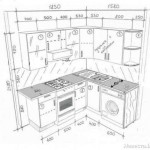Essential Aspects of Kitchen Cabinet Hinges Fitting Instructions
Kitchen cabinet hinges are crucial components that ensure the smooth and proper functioning of your cabinet doors. Precise fitting of these hinges is essential for both aesthetic and functional reasons. Understanding the essential aspects of kitchen cabinet hinges fitting instructions is key to achieving a professional-looking and durable installation. This detailed guide will delve into the fundamental elements you need to consider for successful hinge fitting.
1. Preparation
Before commencing the hinge fitting process, thorough preparation is crucial. Gather the necessary tools and materials, including a drill, screwdriver, hinge jig, measuring tape, and pencil. Ensure the cabinet doors and frames are clean and free of any obstructions. Carefully read and understand the manufacturer's instructions for the specific hinges you are using.
2. Measuring and Marking
Precise measurement and marking are essential for accurate hinge placement. Use a measuring tape to determine the hinge locations on both the cabinet door and frame. Mark these points with a pencil. A hinge jig can aid in ensuring consistent and precise hinge placement. Transfer the marks to the opposite side of the door and frame for the installation of the second hinge.
3. Drilling Pilot Holes
Drill pilot holes at the marked locations using a drill bit that matches the diameter of the hinge screws. The depth of the pilot holes should be slightly less than the length of the screws. This will prevent the screws from stripping or damaging the wood when driven in.
4. Installing the Hinges
Align the hinges with the pilot holes and secure them using the provided screws. Ensure the hinges are flush with the surface of the door and frame. Use a screwdriver to tighten the screws firmly, but avoid overtightening.
5. Adjustment
Once the hinges are installed, adjust them to ensure the door opens and closes smoothly. Use the adjustment screws on the hinges to align the door properly, both vertically and horizontally. Check for any gaps or misalignment and make necessary adjustments until the door fits perfectly.
6. Tightening
After adjustment, tighten all screws to ensure a secure fit. Use a screwdriver or torque wrench to apply the recommended torque for the specific hinge type. This will prevent the hinges from loosening over time and maintain the proper alignment of the door.
7. Testing
Test the operation of the door by opening and closing it several times. Check for any binding, squeaking, or uneven movement. If any issues arise, re-adjust the hinges accordingly until the door functions smoothly and silently.

Adjusting Cabinet Hinges The Diy Life

How To Adjust Your Kitchen Cupboard Doors Made Easy

Home Dzine Diy Quick Tip Install Concealed Hinges

Concealed Hinges Hafele

How To Measure Install Concealed Hinges On Cabinet Doors
Measuring Hinge Holes

Measuring Hinge Holes

How To Install Concealed Hinges The Complete Guide

Guide And Instructions For Installing Cabinet Door Hinges

How To Install Cabinet Hinges Pine And Poplar
Related Posts








